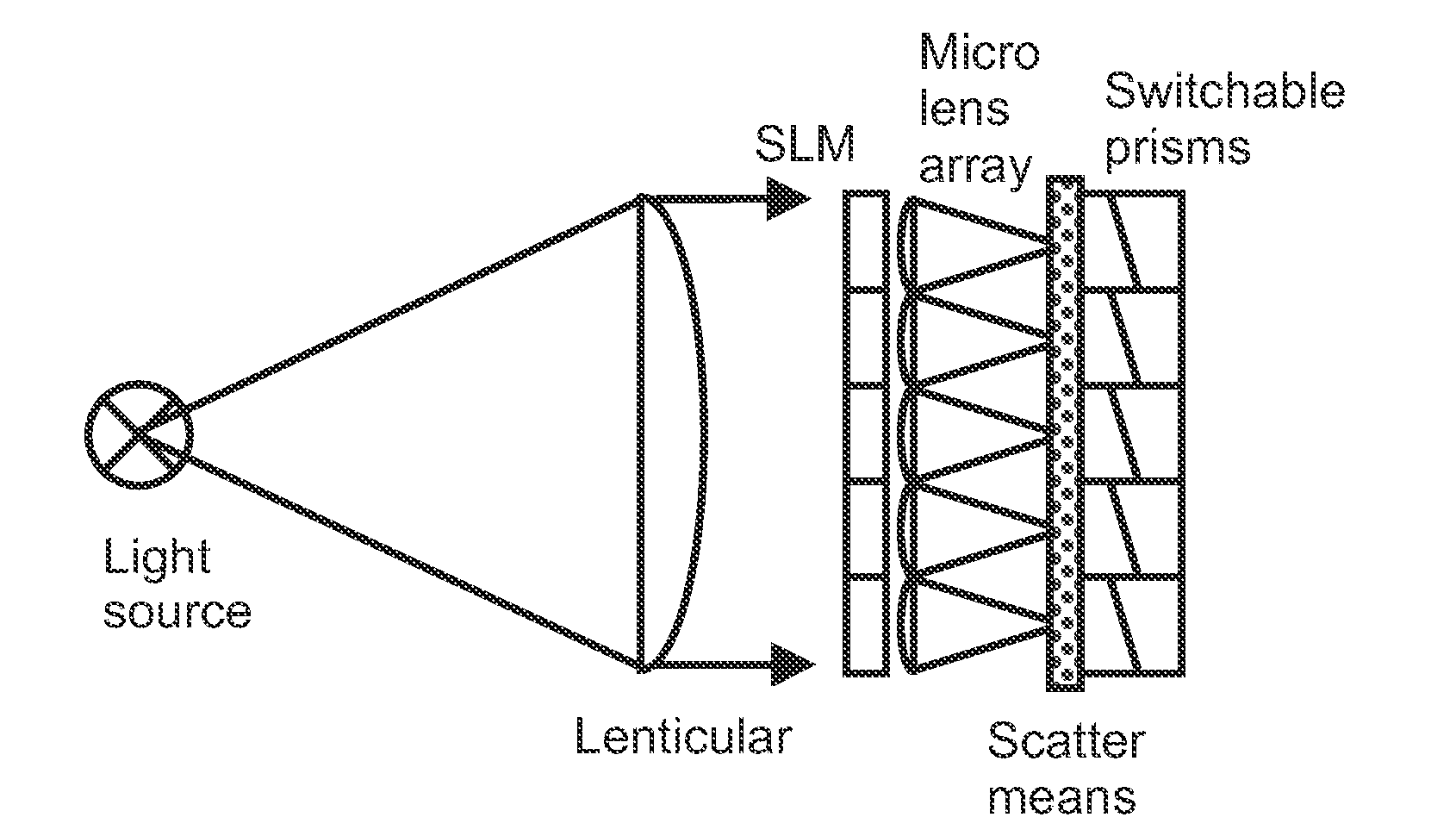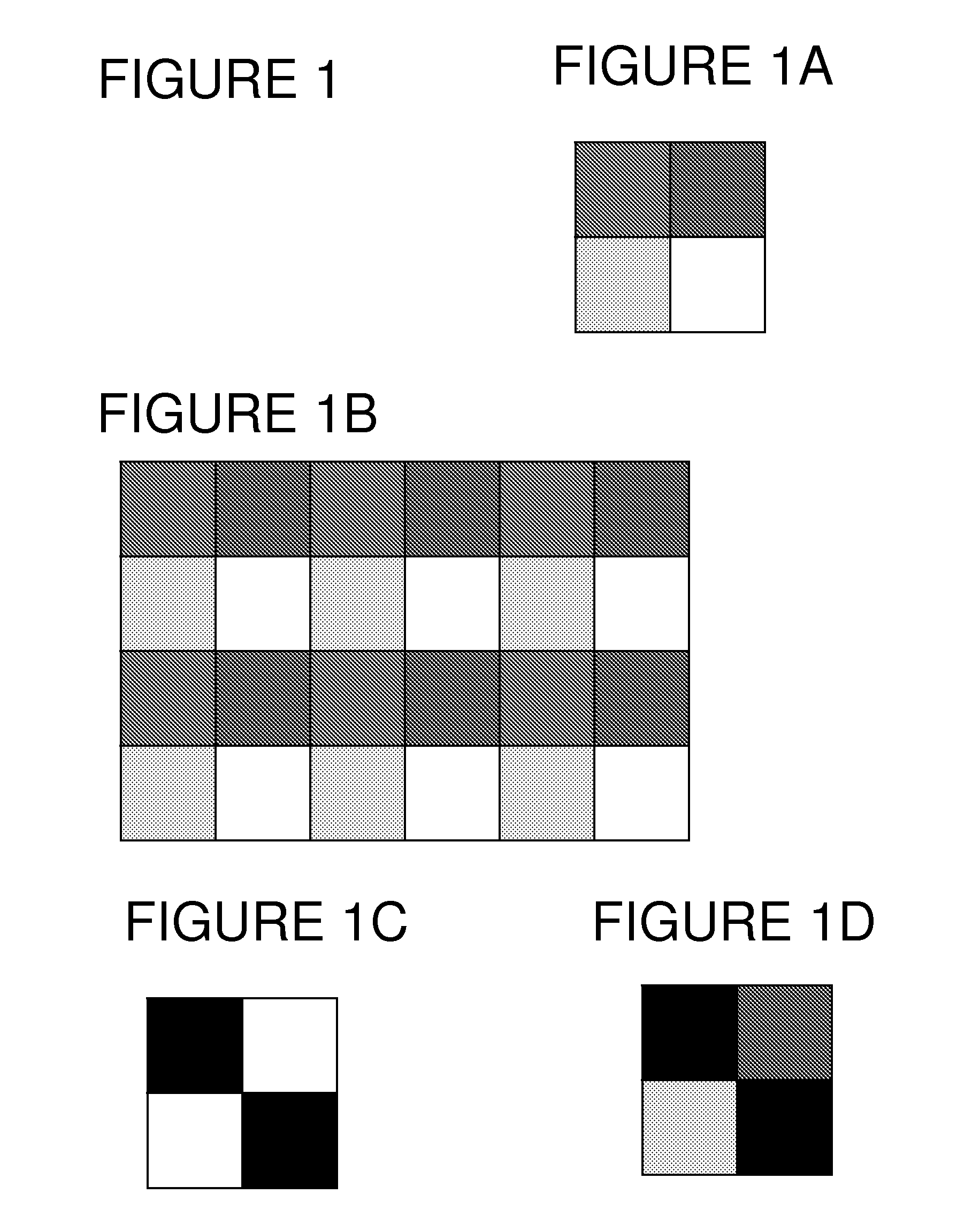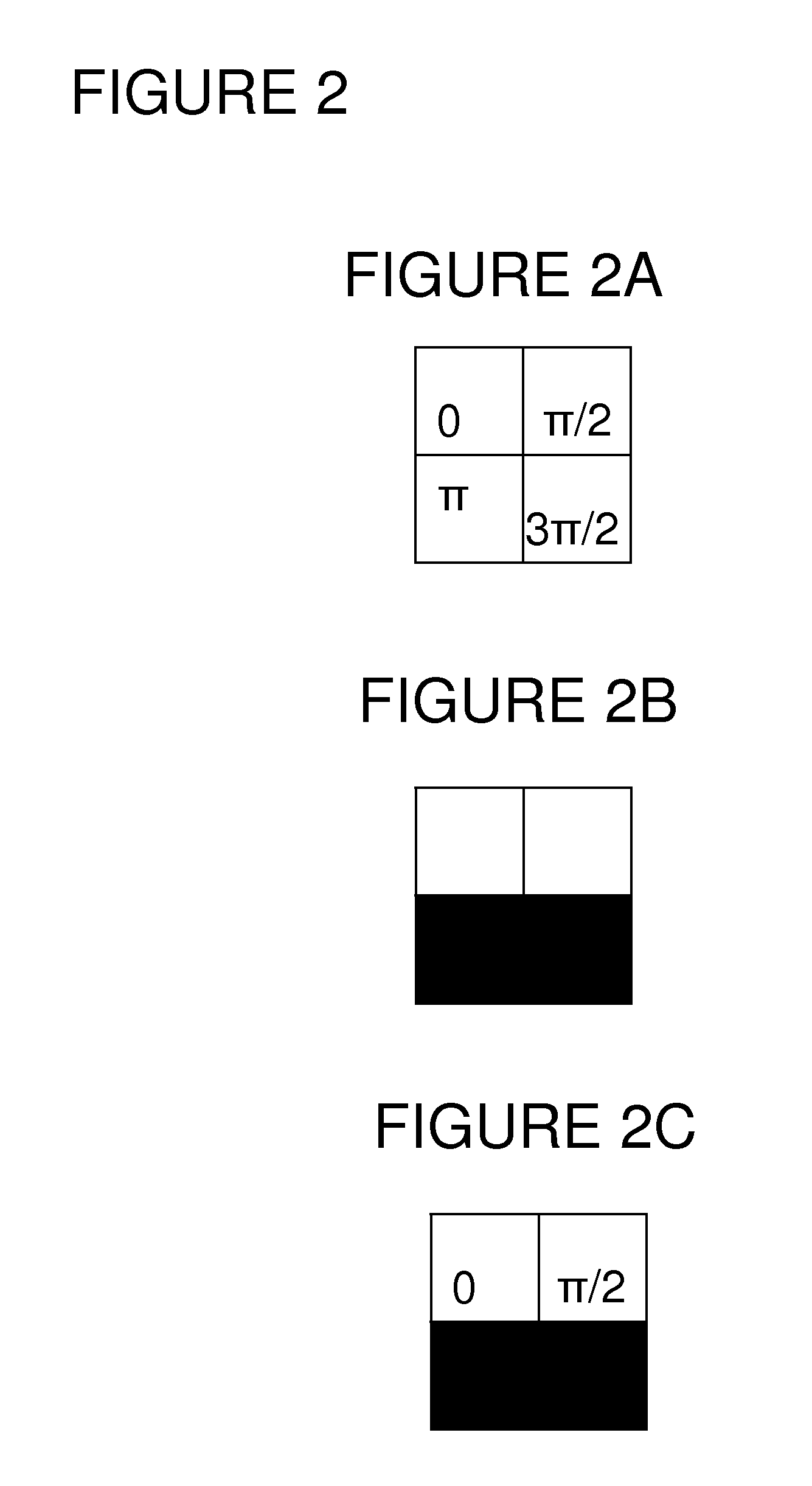Light modulating device
a light modulating device and light technology, applied in the direction of optics, holographic process, holographic nature/properties, etc., can solve the problems of high calculation effort, modulation of coherent light, and method that is usually not applicable to holographic us
- Summary
- Abstract
- Description
- Claims
- Application Information
AI Technical Summary
Benefits of technology
Problems solved by technology
Method used
Image
Examples
Embodiment Construction
[0119]Various implementations will now be described.
[0120]A. Macropixel as a Combination of an SLM and a Fixed Diffractive Element
[0121]The aim is make use of the advantages, for example fast switching times, of SLMs with relatively few quantization steps e.g. binary SLMs, for holographic reconstruction or for other more general light modulation tasks, but to do this in a way such that the disadvantage of these SLMs, i.e. the small number of quantization steps, is compensated for. The meaning of the term ‘relatively few quantization steps’ may depend on the particular setup and may include all cases where the effects of quantization on the result of light modulation may be improved upon to lead to higher quality holographic reconstruction.
[0122]In an example of an implementation, a combined light modulating device, such as a holographic display, is set up in the following manner[0123]a pixelated SLM—with addressable variable content—is combined with a pixelated diffractive element—w...
PUM
 Login to View More
Login to View More Abstract
Description
Claims
Application Information
 Login to View More
Login to View More - R&D
- Intellectual Property
- Life Sciences
- Materials
- Tech Scout
- Unparalleled Data Quality
- Higher Quality Content
- 60% Fewer Hallucinations
Browse by: Latest US Patents, China's latest patents, Technical Efficacy Thesaurus, Application Domain, Technology Topic, Popular Technical Reports.
© 2025 PatSnap. All rights reserved.Legal|Privacy policy|Modern Slavery Act Transparency Statement|Sitemap|About US| Contact US: help@patsnap.com



